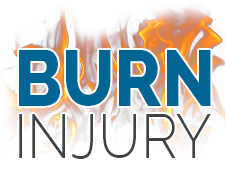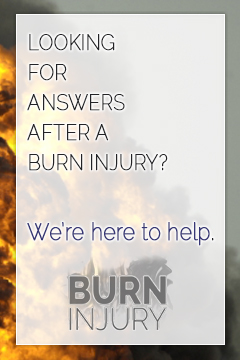Second Degree Burn
Second degree burns, also called partial thickness burns, affect the top two layers of skin-the dermis and epidermis. Second degree burns are caused by the same things as first degree burns, so it is important to identify second degree burns so that proper treatment can be pursued. Second degree burns should be treated by medical professionals in most cases to avoid infection, scarring, and other complications.
Identifying Second Degree Burns
Blistering will usually be the first warning sign that the burn is more severe than first degree. Discoloration such as redness or whitening of the skin will often appear in the area that was burned, and the burn will be painful. Some swelling may be present, as well.
If the burn is very small, less than three inches, it may be possible to treat the burn at home. If the burn covers a larger area than that, or is located on the hands, feet, buttocks, genitals, buttocks, or face, seeking medical attention is necessary. Once the severity of the burn has been determined, immediate action should be taken to treat the burn.
Treating Second Degree Burns
Immediately following a second degree burn, the patient should work to cool the skin. The best way to do this is typically with cool water. Running water over a burn is recommended, but if this is difficult, the burned area can be submerged in water or compresses can be used to cool the burn. Avoid very cold compresses, water, or ice, as these things may cool skin too rapidly and cause complications such as hypothermia.
Prevent Infection
Care should be taken to keep the burn clean and free from contamination. Covering the burn with a bandage or gauze can help keep debris from getting into the burn. Coverings should be free of lint. Any covering used should be wrapped loosely to allow air flow and avoid damaging or tearing burned skin.
Pain Relief
Second degree burns are very painful. Certain over-the-counter pain relievers will work to relieve pain and reduce swelling. If a child has been burned, read warning labels thoroughly before administering over-the-counter drugs. If there are concerns, seek the advice of a medical professional.
Professional Medical Treatment
While most second degree burns will heal without treatment, medical professionals may be able to properly sterilize the burn and prescribe pain relievers. If there is a risk of infection, medical professionals may prescribe antibiotics. Medical professionals will also be able to give a professional assessment of the severity of the burn and determine the need for further treatment.
Sources:
“Burns.” Medline Plus. U.S. National Library of Medicine, 13 Jan 2010. Web. 19 Dec 2013. <http://www.nlm.nih.gov/medlineplus/ency/article/000030.htm>.
“Classification and Treatment of Burns.” Lucile Packard Children’s Hospital at Stanford. Lucile Packard Children’s Hospital, n.d. Web. 19 Dec 2013. <http://www.lpch.org/DiseaseHealthInfo/HealthLibrary/burns/classify.html>.
“What is a Degree Burn?.” 2nd Degree Burns. 2nd Degree Burns, n.d. Web. 19 Dec 2013. <http://www.2nddegreeburns.net/>.













